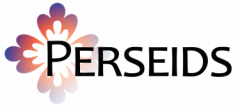The Digital Milliet: Greek and Roman Painting in the 21st Century
The Perseids team, with the collaboration of Perseus Researcher Valérie Toillon, has undertaken a study of ancient Greek and Roman painting. Using the tools of the Perseids platform, the “Digital Milliet” project will offer a comprehensive collection and commentary on all the ancient Greek and Latin texts about painting. The study of ancient Greek and Roman painting is notoriously difficult: the works of art are lost and only known from ancient descriptions and comments which range in date between the 5th century B.C and the 4th century A.D. However, these paintings and painters are familiar to us through later works such as the “Calunnia di Apelle” by Sandro Botticelli (1495), which was made to follow the description made by Lucian of Samosata (De Calumnia, 2-5). Thus, ancient paintings, even if they are irremediably lost, left a deep impression in Western pictorial imagination since the Quattrocento.
However, the texts that describe ancient paintings are not easily accessible because they are gathered in collections which are not easy to consult, like the five volumes of Overbeck’ Source Texts on Ancient Art (1868). Other resources are outdated, such as the Recueil Milliet, a French sourcebook published in 1921 which was adapted partly from Overbeck’s work. In this collection, every text was translated and commented. But the author, A. Reinach, retained the ancient view about art, namely that it had evolved from obscure origins to the light of the classical art embodied by Apelles and the Alexandrine school of painting. New digital tools made available by the Perseus Digital Library team on the Perseids platform now make it possible to present these texts in a new kind of reference work. All the ancient texts will be classified in a searchable alphabetical index of authors and cross-referenced. Each text will also be accompanied by an English and French translation. In the second phase of the project, new commentaries will be added to explain the texts, especially the controversial technical questions that surround ancient painting such as colors, shadowing, symmetry, etc. The third and most important part will be the adjunction of an iconographical database which will complete the textual annotations. This part aims to provide concrete examples of ancient Greek painting to fill the gap between archeological material, which is plentiful, and ancient textual sources. The purpose of our project is therefore to offer a comprehensive view of ancient painting in a digital collection which will be easily accessible to a broad audience of scholars, students, and the general public.
